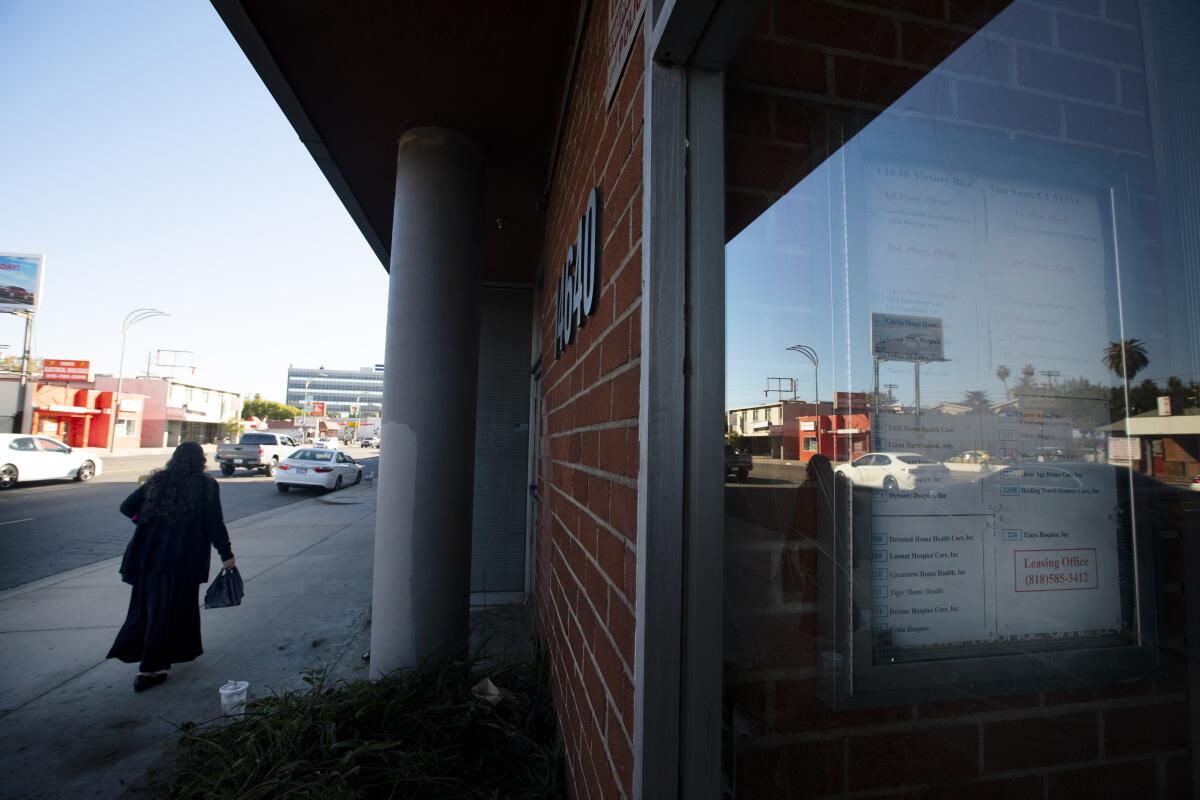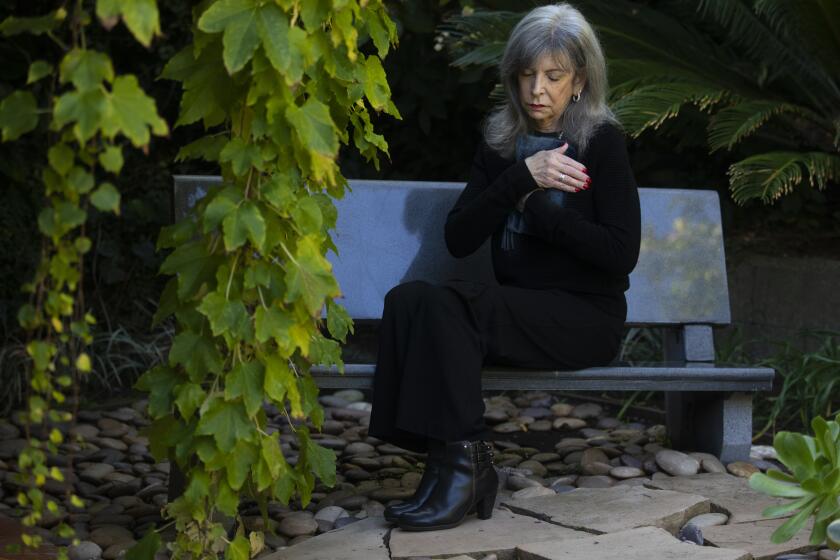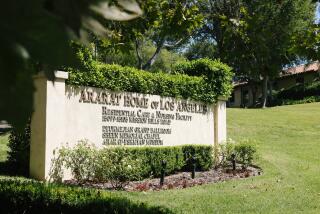What you need to know if you or a loved one requires end-of-life care

- Share via
Conceived as an end-of-life option for terminally ill patients, hospices provide palliative care, medications, nursing services and counseling for those diagnosed with six months or less to live.
The number of U.S. hospices has roughly doubled in the last 20 years, as more for-profit providers vie for a share of $19.2 billion a year in Medicare spending that covers hospice care. More than 1.5 million Medicare beneficiaries now receive care from some 5,000 hospices, nearly a quarter of them in California.
While hospice has been a godsend for millions of dying Americans and their families, a Times investigation found that intense competition for new patients has spurred billing fraud and other illegal practices, including falsified diagnoses and kickbacks to unscrupulous doctors and recruiters who target prospective patients at retirement homes and other venues.
The Times also found hundreds of instances in which California hospice patients were harmed, neglected or put at serious risk, their mistreatment sometimes exacerbated by serious gaps in government oversight.
What are the benefits of hospice care?
Hospice is intended to provide comforting, compassionate care and a range of support services for terminally ill patients and their families. In addition to nursing and medical care that includes pain management, prescription drugs and supplies, patients receive spiritual and emotional support, help with personal hygiene and respite care for family caregivers.
Most hospice patients receive care in their homes, including assisted-living settings and nursing facilities.
How do I choose a hospice?
There’s no set formula for choosing a hospice, although experts suggest discussing options with your personal physician and seeking recommendations from friends and relatives whose loved ones have had good experiences.
You should also interview any prospective hospice, asking questions about its licensing, which is required by the California Department of Public Health; whether it is certified by Medicare; when it was last inspected and whether violations were found; the range of available services; the makeup of the hospice care team and the roles of its doctors, nurses and others; and the role the hospice expects family members to play in a patient’s care plan.
Several industry and advocacy groups offer online guidance, including the National Hospice and Palliative Care Organization, which provides a worksheet and a list of questions.
Nowhere has the hospice industry’s growth been more explosive, and its harmful side effects more evident, than in Los Angeles County.
How do I know if a hospice is reliable?
There is no one place where consumers can go to make a comprehensive comparison of local hospices — a gap that patient rights advocates have long criticized.
A variety of online sources provide information about hospice care, but each has limitations. Medicare’s hospice comparison site allows consumers to search for providers by ZIP Code or name, but has scant information about quality-of-care issues and inspections.
The California Department of Public Health has a searchable tool called Cal Health Find Database, which provides users with inspection reports when serious violations are uncovered back to 2017. It also allows consumers to compare quality metrics of up to three hospices at a time, but it doesn’t provide a rating system for providers. The results of inspections by accrediting agencies are not included on the site — a significant problem for consumers in California, where more than 80% of hospices contract with accrediting agencies rather than the state to conduct certification inspections once every three years.
Another resource that is more difficult to navigate is an interactive site maintained by the Centers for Medicare and Medicaid Services. The site includes copies of complaint investigations and a look-up function that allows users to compare the number of serious violations at hospices in California and other states.
A Times investigation found care failures at hospices, including mismanaged medications, neglected wounds and missed appointments.
What red flags should I look for?
Be on the lookout for any hospices that have been cited in recent years with serious violations. In the language used by Medicare, these include “condition-level” deficiencies or “immediate jeopardy” situations, which are considered the most severe. Also, hospices can be cited for failing to certify that patients are terminally ill, which is an indication of possible fraud.
If you have the name of a hospice administrator, which can be found on the state public health department’s website, you can find out if that person has been excluded from receiving federal healthcare payments on a site run by the U.S. Department of Health and Human Services’ Office of Inspector General.
If I’m not happy about my hospice, where do I complain?
If you can’t resolve your issues with the hospice, the California Department of Public Health investigates complaints, which can be filed online — but not necessarily with satisfying results.
You may also file a complaint about Medicare providers directly with the federal agency or with the California Senior Medicare Patrol, a federally funded statewide hotline to help Medicare beneficiaries prevent, detect and report fraud.
More to Read
Sign up for Essential California
The most important California stories and recommendations in your inbox every morning.
You may occasionally receive promotional content from the Los Angeles Times.














